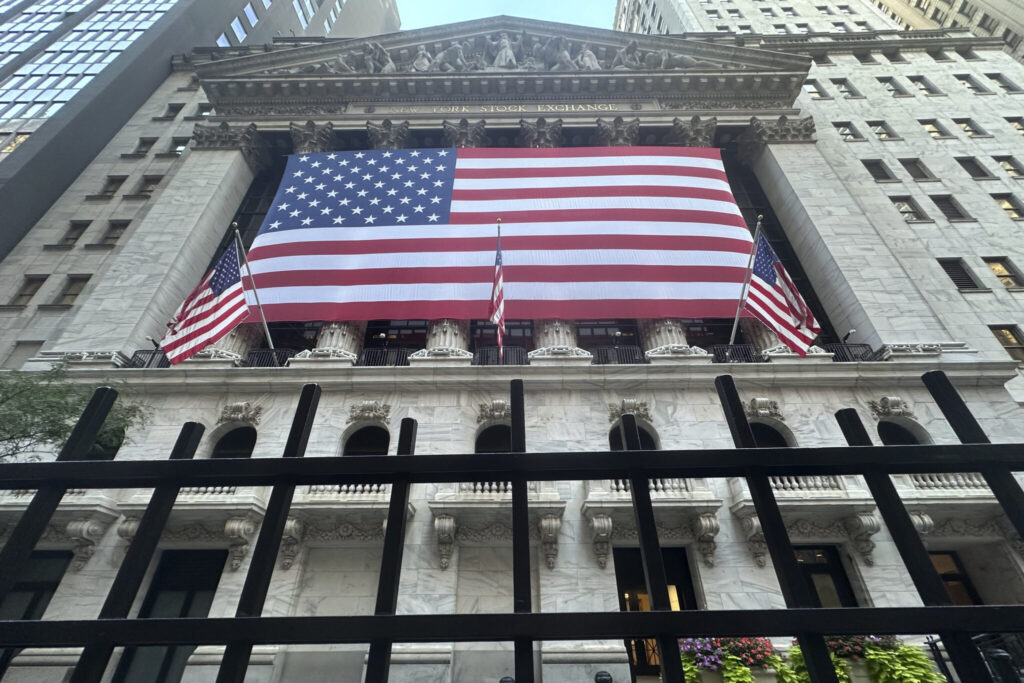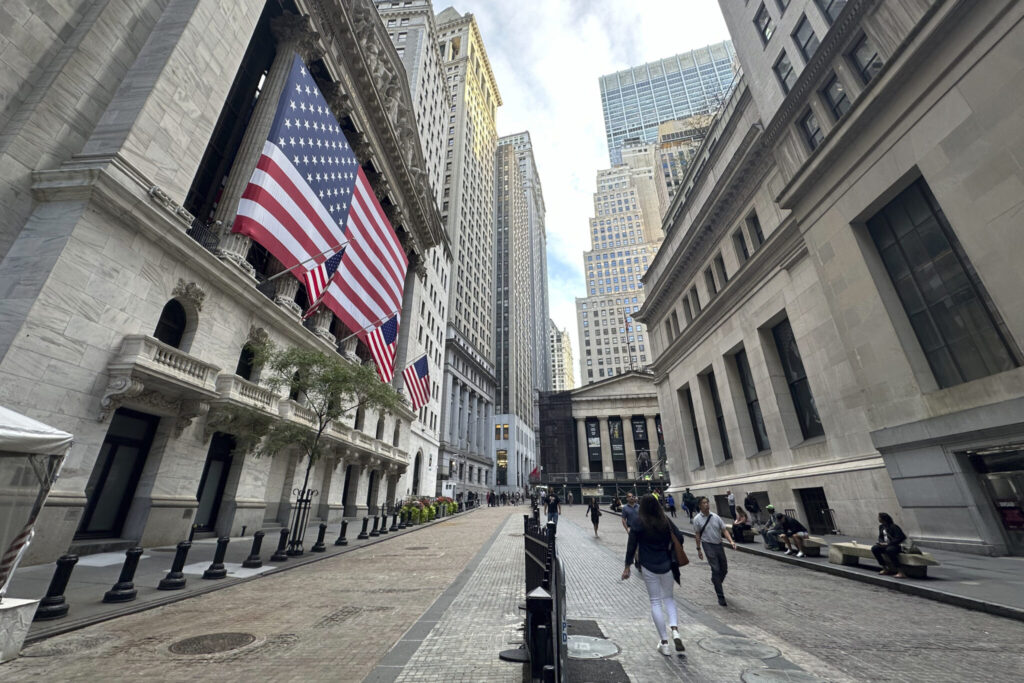Stock market performance/ U.S. stock trading/ inflation data/ Federal Reserve rate cut expectations/ market stability/ Newslooks/ NEW YORK/ U.S. stocks showed mixed performance Thursday following economic reports that aligned with expectations. The S&P 500 rose 0.2%, continuing its upward trend, while the Dow slipped slightly. Nvidia’s stock gained 2.6%, helping offset Moderna’s 17% drop. Treasury yields remained steady, as traders anticipate a likely Federal Reserve rate cut next week.

Wall Street Stability Quick Looks:
- The S&P 500 gained 0.2%, while the Dow Jones dipped 45 points.
- Nvidia rose 2.6%, offsetting Moderna’s 17% decline due to revised profitability expectations.
- Treasury yields held steady, with inflation and unemployment reports offering few surprises.
- Investors anticipate a quarter-point Federal Reserve rate cut next week, the first in over four years.
- European Central Bank cut rates by 0.25%, echoing global economic concerns.
Wall Street Steady as Economic Reports Meet Expectations
Deep Look:
Wall Street experienced relatively stable trading Thursday as key economic reports met market expectations, calming investor nerves ahead of an anticipated Federal Reserve rate cut next week. The S&P 500 rose by 0.2% in the morning session, maintaining its momentum and positioning it for its fourth winning week out of the last five. The index is now just 1.8% below its record high set in July after enduring a volatile summer.
Meanwhile, the Dow Jones Industrial Average slipped 45 points, or 0.1%, and the Nasdaq Composite saw a 0.5% increase. A surge in Nvidia’s stock, which climbed 2.6%, helped buoy the overall market. Nvidia’s shares had previously dropped by more than 20% during the summer due to concerns that investor enthusiasm over artificial intelligence had pushed the stock too high. Wednesday’s 8.1% rise, followed by Thursday’s continued uptick, indicates renewed confidence in the chipmaker.
However, Moderna’s stock plummeted 17% after the vaccine manufacturer extended its breakeven target to 2028, two years later than previously projected. The company has seen a significant drop in sales after the peak of the COVID-19 pandemic and announced plans to reduce research and development spending by 20% for 2025-2028. Moderna’s steep decline put some pressure on the broader market.
In the bond market, Treasury yields showed little change, remaining relatively steady as investors digested economic data. The 10-year Treasury yield increased slightly to 3.68%, up from 3.66% on Wednesday, while the two-year yield, closely tied to expectations of Federal Reserve movements, ticked up to 3.66% from 3.65%.
Thursday’s economic data included reports on inflation and unemployment, both of which offered few surprises. Jobless claims increased modestly, with 230,000 Americans filing for unemployment benefits last week, a figure consistent with economists’ projections. Though the number of claims has risen from earlier this year, it remains low compared to historical averages, signaling that layoffs are still relatively minimal.
The Labor Department also released data showing that producer prices, an indicator of wholesale inflation, rose by 1.7% year-over-year in August. This was a slowdown from July’s inflation rate, suggesting that price pressures continue to ease. However, a core measure of inflation, excluding volatile food and energy prices, ticked up slightly more than expected. The data reinforced market expectations that the Federal Reserve will cut its benchmark interest rate by a quarter of a percentage point next week, rather than the more aggressive half-point cut that some had previously anticipated.
Although lower interest rates can stimulate economic activity and boost asset prices, they can also reignite inflation, which the Fed has spent the last two years trying to control. After raising interest rates 11 times between 2022 and 2023 to combat inflation, the Fed is now poised to shift gears. A potential rate cut next week would be the first since the central bank began its inflation-fighting campaign.
On the global stage, the European Central Bank (ECB) has already taken steps to protect its economy, cutting interest rates by a quarter of a percentage point on Thursday. This marks the ECB’s second rate cut aimed at supporting growth. Such moves have raised concerns about how much the Fed will ultimately cut rates, with many investors predicting that the central bank could reduce rates by over two percentage points in total over the next year. The Fed’s current target range for the federal funds rate is between 5.25% and 5.50%.
UBS strategists, led by Jonathan Golub, warn that any divergence from expected rate cuts, whether caused by a resurgence in inflation or unexpected recession risks, could unsettle the market.
Elsewhere on Wall Street, Kroger’s stock rose 3.3% after the grocery chain reported stronger-than-expected profits for the latest quarter, though its revenue fell short. The company also raised its full-year forecast for a key revenue measure. In the airline sector, Alaska Air Group gained 0.9% after raising its profit outlook for the summer quarter, citing better-than-expected revenue growth and lower fuel costs. Delta Air Lines, however, saw its stock slip 0.6% after initially rising. While Delta said its summer earnings would likely hit the high end of its forecasted range, the airline also warned of the financial impact from canceled flights due to a recent technology outage.
In international markets, European stocks were mostly higher, while Japan’s Nikkei 225 index jumped 3.4%, bouncing back from a seven-day losing streak that had driven sharp losses.







